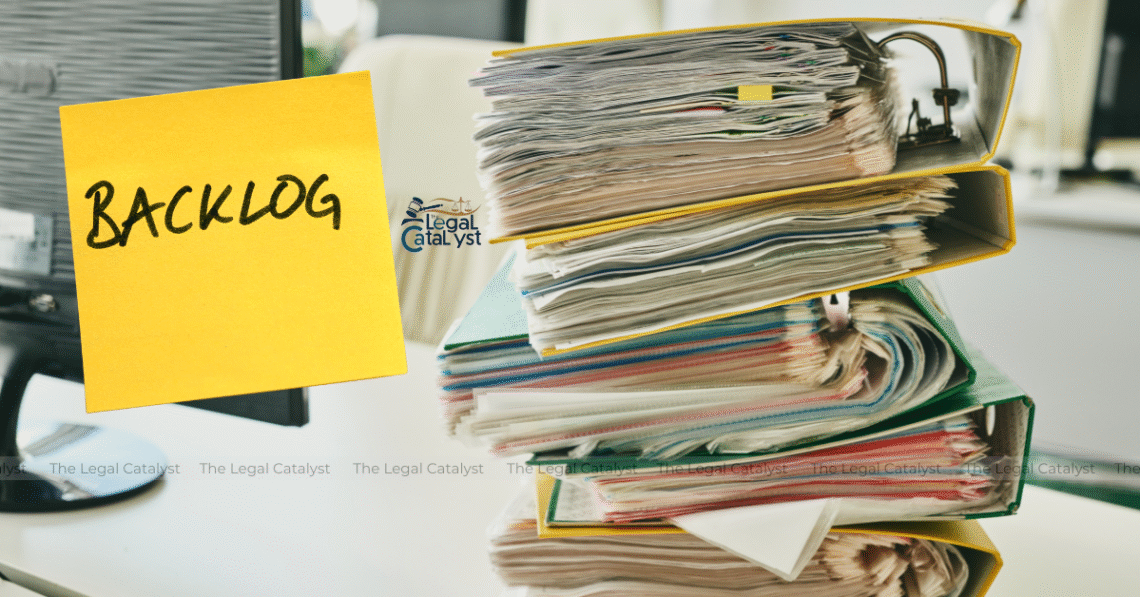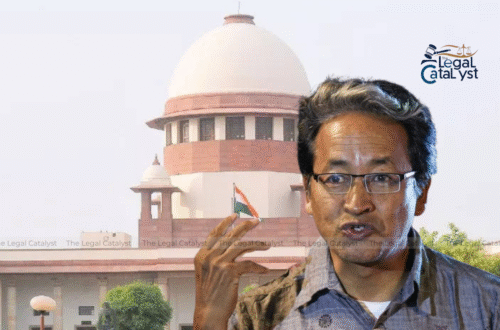India’s judiciary stands as the guardian of constitutional democracy and protector of citizens’ rights. Yet today, it grapples with an overwhelming judicial backlog that is eroding justice delivery and shaking public trust. According to the National Judicial Data Grid, more than 50 million cases remain pending in courts nationwide as of 2025, creating a crisis that demands urgent reform.
The Magnitude of Judicial Backlog in India
- Supreme Court: Over 80,000 pending cases, many awaiting admission.
- High Courts: Approximately 60 lakh pending cases.
- District & Subordinate Courts: Around 4.5 crore pending cases, representing the bulk of the backlog.
These numbers highlight a growing disparity between case filings and dispositions, resulting in excessive delays in justice.
Causes Behind the Judicial Case Backlog
- Judicial Vacancies & Low Judge-Population Ratio
India has just 21 judges per million people, far below countries like the US (107) and UK (51). With over 400 vacancies in High Courts and 5,000+ in lower courts, this shortage severely restricts case disposal rates. - Procedural Inefficiencies
Lengthy oral arguments, frequent adjournments, and outdated procedural laws delay hearings. Lack of strict timelines leads to a culture of procrastination. - Government as the Largest Litigant
Nearly half of all cases involve government departments in disputes like tax, service matters, or land issues, further clogging courts. - Infrastructure & Digital Divide
Many courts, especially in rural areas, lack basic facilities and digital infrastructure, hindering case management and e-filing processes. - Rising Socio-Economic Litigation
Increased public awareness, commercial disputes from economic growth, and rising urban crime contribute to the escalating caseload .
Impact of the Case Backlog
- Delayed Justice Erodes Rights: Long waits directly contradict the principle of “justice delayed is justice denied,” affecting undertrial prisoners and victims alike.
- Economic Setbacks: Prolonged disputes deter investment and hurt India’s ease of doing business.
- Loss of Public Faith: Chronic delays push litigants to abandon cases or seek informal resolutions, undermining the rule of law.
- Governance Challenges: Judicial delays weaken checks and balances crucial to democracy.
Progressive Reforms and Their Challenges
India has made strides with initiatives like:
- Fast Track and Special Courts focusing on sexual offenses, corruption, and commercial disputes.
- e-Courts Project for digitization and virtual hearings.
- Alternative Dispute Resolution (ADR) and Lok Adalats promoting faster settlements.
- Tribunalisation to reduce High Court burdens.
- Proposed All India Judicial Service (AIJS) to streamline recruitment.
However, full implementation faces hurdles including resistance over federalism concerns, digital literacy gaps, underutilization of ADR, and executive-judiciary conflicts.
The Way Forward: Multi-Pronged Solutions for Timely Justice
To effectively tackle judicial backlog:
- Fill judge vacancies strategically, aiming for at least 50 judges per million people.
- Enforce procedural discipline to limit adjournments and prioritize written submissions.
- Mainstream ADR methods like mandatory pre-litigation mediation.
- Embrace technology: AI case management, blockchain-secured records, and expanding virtual hearings.
- Reduce government litigation through pre-screening and departmental settlements .
Conclusion: Restoring Faith in India’s Judiciary
The backlog is not just an administrative issue but a constitutional and social crisis undermining justice, economic progress, and democratic governance. India needs bold, comprehensive reforms—judicial capacity building, infrastructure upgrades, procedural overhaul, digital transformation, and litigation rationalization—to restore faith and ensure speedy justice for all.
Connect with us on Instagram – X – LinkedIn for daily updates, quizzes, and other materials
Also Read- Understanding the Legal Status of Cryptocurrency in India in 2025







